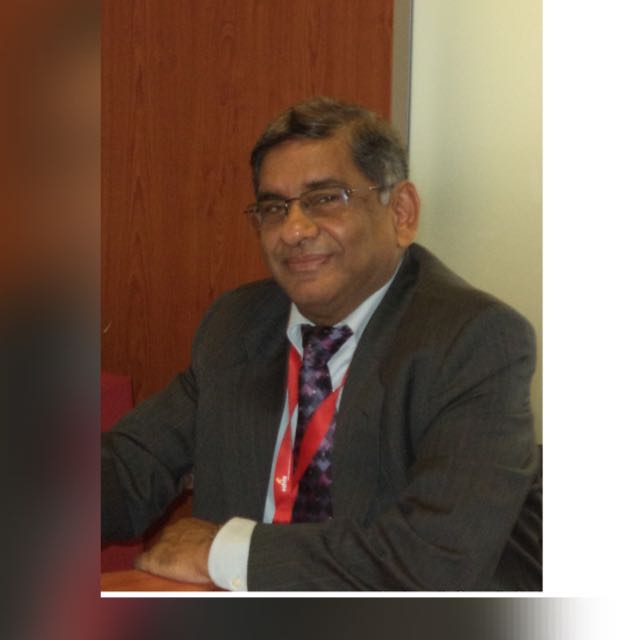
FINAL | BUSINESS CASE - BCS 09
Submission BCS 09
NMO Season 3
Innovative and technology powered approach to economically viable and environmental friendly waste to wealth conversion
Submission Date & Time : 2021-04-03 11:15:51
Submitted By : Mohammed Obeid - From Team Sarabhai
Our solution is divided into 2 aspects
1. Business Analysis:
To identify sustainable waste handling methods, run an Internal and External Analysis to identify and address potential challenges, check financial viability of our solution and future expansion opportunities.
2. IT Management & Web development:
To efficiently record, maintain, analyse and derive conclusions to make business decisions we will need a Management Information System (MIS) to keep track of all activities from waste collections to Energy production and distribution.
Also, in line with marketing strategies, we will need an mobile application which will help customers actively engage in proper waste management and inturn increase their reward points.
Part 1: BUSINESS ANALYSIS
The characteristics of municipal solid waste (MSW) is a major factor, which is considered as a basis for the design of efficient, cost effective and environmentally compatible and sustainable waste management systems.
Current Scenario - MSW Management Analysis of Bhopal
Municipal solid waste in bhopal comprise a big portion of biomass material such as paper, food, wood waste, clothes rage, plastics, vegetable, rubbers, polythene, tyres, and others daily used discarded materials (Citings:Iqbal and Khera, 2015; Nagayama, 2010; Sharholy et al., 2008)
Municipal solid waste is the result of human daily activities whether an ineffective and inappropriate management system is used. So it may cause environmental pollution and endangers mankind's health, wealth and other living and non living components of the ecosystem.
On other hand, the conventional sources of energy like fossil fuels and petroleum are depleting at rapid rates and it will be sufficient only for 200 years farther if we continue to exploit it at the current rates (Citings: MSWM, 2003; Nagayama, 2010).
Due to this potentially dangerous situation, we seek for an alternative source of energy. In this regard municipal solid waste can be taken as an opportunity to be a potential source of energy for power generation that can fulfill energy demands of Bhopal city metro project and can also be utilized properly in industries and agriculture sectors
At present, to handle the solid waste properly in an efficient and financially viable way is a big challenge for municipal corporation Bhopal and the government of Madhya Pradesh (Citings: Akolkar, 2005; GOI, 2003).
In Bhopal city urbanization is increasing at a rapid rate and hence the waste generation is also increasing day by day. Bhopal has about 285.88sqkm of area with about 2,390,000 populations. Average waste generation is about 380gm per capita per day and 886 tons per day. The amount of waste generated has increased from 569 metric tons/day in 2011 to 886 metric tons/day now in 2021, resulting in a 55.7% increase in a decade.
Current Waste collection Practices:
In the last three years, Bhopal Municipal Corporation (BMC) has established a door to door collection scheme in which about 6000 rag pickers and 300 rickshaw pullers are engaged for waste collection. Out of the 4.5 lakhs households in Bhopal, waste is collected from at least 2.5 lakhs households daily. This waste is either unloaded in the nearby dustbins or at the collection centre from where the municipal vehicles lift the garbage and dump it at the Bhanpura dumpsite which is situated at Vidisha road of the city. More than three decades old and about 90% filled to its capacity, this site is now inside municipal limits. Thus, there is a need for various technological options to cap the dumpsite scientifically and create a scientific landfill outside the municipal limits.
Learnings:
To minimize waste generation, it is vital to concern sustainable development of society but the energy harvesting from its flow is the most viable option for social transformation with renewable technologies. More and more waste produced wouldn’t be an issue if garbage is treated as a resource and properly managed. However, despite the large amount of waste generated, cities still suffer from power shortages due to excessive dependence on fossil fuel power and electricity use generators.
Although it has been found that fossil fuel deposition can meet human energy needs,
-
This type of deposit is limited.
-
Exploration and production costs make them an exorbitant product in the market.
-
Our energy needs are also growing corresponding to population growth and technology progress.
It is necessary to explore renewable energy and waste to energy to reduce dependence on fossil fuel power generation which results in greenhouse gases, which in turn deplete the ozone layer, leading to global warming.
Appropriate use of municipal solid waste plays a vital role in reducing pollution and Greenhouse gases, which reduce the impact on the atmosphere. Energy recovered from Municipal solid waste (MSW) can also reduce the consumption of fossil fuels. It also reduces the amount of land needed to dispose of municipal solid waste. Bad emissions from landfills to air and water. MSW is a resource with immense scope in materials and energy recovery.
Optimum use of MSW can generate a reasonable amount of electricity which can power the communities and even small factories. On a global scale, people have made tremendous efforts to develop processing technology to unlock resources and economic value of surplus waste as population grows and demand for optimal sustainability of waste management
Outcomes:
For sustainable development and environmental protection, these wastes should be processed effectively so that it can satisfy the energy demands and maintain the sustainability of the environment. The type of waste and its composition analysis can help in decision making on which method of energy recovery can be effectively utilized.
Defining key objectives & Strategies to effectively manage wastes & make it economically viable:
Internal Analysis using MOST Concept:
Mission:
-
To make bhopal self sustainable in energy sector, remove cost of new energy development by implementing waste to energy technologies
-
To address 2 main concerns in waste management - Environment friendliness and Economical impact
-
To efficiently utilise MSW and make it as sustainable source of energy in form of electricity, fuel, metals and more
-
Fuel economic growth with net zero new energy development through innovation in waste reprocessing and management
Objectives:
-
Implement strategy to reduce, reuse and recycle as MSW to maximum possible extent
-
Achieve 100% processing of 886 tones/day waste, clear already dumped garbage at landfills site and use the land for environmentally friendly purposes
-
Convert 100% of waste left over after recycling to a sustainable energy source
-
Reduce carbon emission rate from current average of 7-8 metric tons/person/year to 2.5-3 metric tons/person/year
Strategy:
1.Central Recycling & Production Center
Here all other types of wastes including plastic, paper, wood, garments, metals and e wastes will be recycled and recycled raw materials will be used for the production of tools required to utilise renewable sources of energy (Solar panels, wind turbines, UV reflective paints etc.)
2. Anaerobic Degradation Technology (Use anaerobic degradation to convert biodegradable waste to energy)
3. Incineration waste to energy technology (To convert non biodegradable waste to energy)
Tactics:
Energy developed can be used to power metro trains in the city of bhopal. This will help in saving costs and generating new revenue from the use of electricity produced from waste
Analysis:
1 ton of waste can provide upto 600kWh of electricity
886 tons of waste - 620,200 kWh of electricity
Bhopal currently has 2 active routes for metro trains with a combined length of 27.87km.
Considering an avg. of 14 trips per day - 28 kms* 14 = 400 kms per day
Metro travelling 400 km needs 6300Kwh electricity
Average fare per person per km: Rs 2
50,000 passenger per trip
Total passengers for 14 trips - 50,000*14=700,000
Revenue generated/day = 700,000*2= 1400,000
Revenue generated per annum = 1400,000*12*30 = 50,400,000
As per the analysis, powering Bhopal metro trains will require less than 4% of total electric power generated. Remaining electricity can be used to provide electricity to villages and government buildings and industries
External Analysis using PESTEL:
Political:
Existing Government policies support the overall waste collection and recycling process. Necessary laws promoting use of energy efficient products including automobiles, heavy machinery and more, approval & financial support from government to business seeking to setup waste recycling plants for energy generation is required
Economic:
With economic growth of city and awareness among businesses and general population about importance of reducing and effectively managing wastes will positively impact our efforts
New setups of recycling centers will also create employment opportunities
Social:
With literacy rate of 83.57% and with 65% of population under the age of 35, it is likely that digital advertising campaigns with focus on raising awareness on importance of waste reduction and progressing towards a energy efficient, cleaner and healthier city will resonate among the masses and garner active participation
Technological:
Given literacy rate and high youth population, the introduction and adoption of new technologies will not be difficult. Bhopal population is likely to respond positively to the introduction of new technologies in waste management and cooperate in effective implementation
Legal:
As effective and economically viable waste management is the ultimate goal of government, implementation of projects to achieve net zero new energy development will face minimal legal hurdles.
Environmental:
Currently the carbon emission rate of 7-8 metric tons/person/year in the city is harming the environment and leading to greenhouse effect. Also the energy usage in form of electricity for powering homes, industries, street lights and more, use of fuel for automobile and in heavy industries is leading to depletion of natural resources
Defining the Process:
Process Flow
Waste Collection -> Transportation -> Segregation & Sorting -> Recycling center -> (Non-recyclable waste) ->Waste to energy conversion plants -> Energy generation
-> supply
Collection: Domestic waste from households will be collected using Electric vans. A central waste collection bins will be set up (1 for every 10 local municipal units). This waste collection will be in 5 bins of different colors, where each color specifies a different type of waste (paper, plastic, glass, metal and organic waste). An AI based segregation and sorting techniques using optical sensors, electromagnets, scanners and mechanical sorters to separate waste into different categories and sent to relevant bins.
Transportation: Waste collected from different sources including domestic waste, commercial waste, industrial waste and agricultural waste is transported to segregation & sorting center
Segregation & Sorting: All accumulated waste is sorted and send recyclable products are separated from non-recyclable ones
Recycling center: Here all recyclables are shipped. Products recycled from here are sent to different industries as raw material for new products
Waste to energy conversion: Non recyclable wastes will be separated into Non-biodegradable and Biodegradable waste. We will use Anaerobic Degradation technology to convert biodegradable waste to energy and Incineration technology for converting non biodegradable waste to energy
Energy Generation:
Anaerobic Degradation or Biomethanation:
Biodegradable waste -> Anaerobic Digester ->Biogas -> Electricity or Heat
For complete process, please refer attached pdf
Incineration:
Waste -> Combustion chambers -> Broilers -> Turbines -> Grid Lines -> Power Stations
For complete process, please refer attached pdf
Comparing technologies for energy generation from waste
Here we are comparing different technologies available for waste to energy conversion. This comparison is based on factors such as environment friendliness, power generation, cost effectiveness, energy efficiency and residue (type & amount) produced post conversion process, There are 4 different technological processes which can be used for converting waste to energy and are defined as follows:
1. Incineration:
Incineration: As with almost all other combustion processes, the main products of waste incineration are carbon dioxide (CO2) and water vapour, since the main process that takes place is the oxidation of carbon and hydrogen in the waste. Net energy production depends on the density and composition of the waste. The main residue of municipal solid waste incineration is slag. The amount produced depends on the ash content of the waste. Energy recovered from waste can be used in the following ways
A. Generation of Power (electricity),
B. Generation of Heat,
C. Generation of Heat and Power (CHP)
|
Parameter |
Desirable Content |
|
Temperature |
760°C-870°C |
|
Organic matter recovered |
65-80% (97% when subjected at a temperature of 1600 degree Celsius) |
|
Net Energy Production to Grid |
544 kWh/ton MSW |
|
Residue |
Ash |
2. Anaerobic Digestion
Anaerobic digestion is also known as Biomethanation. It is a process by which organic material is microbiologically converted under anaerobic conditions to biogas. Biomethanation has several merits: first, the emission of CO2 tends to be 25% to 67% less than that from composting. Second, anaerobic digestion is better at treating waste with high moisture content than direct combustion and landfilling. Similarly, cooking oil is better treated in an anaerobic digestion process than through composting. Third, anaerobic digestion requires less space than aerobic composting. The digestate from anaerobic digestion contains about 7.6 kg/ton nitrogen and 1.1 kg/ton phosphorus (dry weight), which are not as effective fertilizer as compost residues.
|
Parameter |
Desirable content |
|
Particle Size |
Feed in the form of slurry or with an optimum size between 25-75 mm |
|
Temperature |
Between 328-333 K |
|
C/N ratio |
Optimum ratio should be 20-30 |
3. Gasification
Traditional gasification is a thermal process that converts carbonaceous materials for example MSW, using a limited amount of air or oxygen to convert into syngas. C0, H2 and CH4 are the basic components of the gasification process for producing a gas mixture
|
Parameter |
Desirable content |
|
Temperature of process |
760°C – 1537 °C |
|
Net Energy Production to Grid |
685 kWh/ton MSW |
|
Residue |
Ash/Slag |
4. Pyrolysis
Pyrolysis can be defined as thermal decomposition of carbon based materials. The heat is used to generate an oxygen-deficient atmosphere to produce syngas. Currently, no direct combustion occurs and the process is endothermic. MSW is pretreated to remove profitable materials and recyclables. The pretreated material is then sent to the pyrolysis reactor where indirect heat source raises the temperature of the material for the production of crude syngas at the top of the tower, bottom ash, carbon coke and metal from the reactor
|
Parameter |
Desirable content |
|
Temperature of process |
649°C - 1204°C |
|
Net Energy Production to Grid |
571 kWh/ton MSW |
|
Residue |
Ash/char |
Analysis:
To summarize the comparison of the various aspects above, to find the most suitable technology for India, scores ranging from 0 (the worst) to 3 (the best) were assigned by ranking each of the technologies in each parameter. For example, anaerobic digestion is the most preferred option in the aspect of air pollution, followed by pyrolysis, gasification and lastly, incineration. Beow table summarizes the scores of the four technologies in all the aspects considered without any special weightage for any of the parameters. The table shows that incineration and anaerobic digestion are generally the most attractive Waste to Energy options, followed by pyrolysis and, lastly, gasification. Incineration is attractive mainly because of its capacity and maturity. Anaerobic digestion is advantageous in terms of its environment-friendliness and cost
|
Parameter |
Incineration |
Anaerobic Degradation |
Gasification |
Pyrolysis |
|
Air pollution |
0 |
3 |
1 |
2 |
|
Cost |
2 |
3 |
0.5 |
0.5 |
|
Side products |
1.5 |
1.5 |
0 |
3 |
|
Capacity |
3 |
2 |
1 |
0 |
|
Maturity |
3 |
2 |
0.5 |
0.5 |
|
Energy efficiency |
1.5 |
0 |
3 |
1.5 |
|
Waste type |
2 |
0 |
2 |
2 |
|
Total |
13 |
11.5 |
8 |
9.5 |
In practice, India has two main concerns regarding its waste treatment strategy, i.e., environment-friendliness and economy. Therefore, more weightages should be assigned to the relevant parameters in comparison. The main parameter that is relevant to environment-friendliness is air pollution, while that for the economy is cost. A double weightage was therefore given to these two parameters. The results are presented in the table below.
|
Parameter |
Weightage |
Incineration |
Anaerobic Degradation |
Gasification |
Pyrolysis |
|
Air pollution |
2 |
0 |
3 |
1 |
2 |
|
Cost |
2 |
2 |
3 |
0.5 |
0.5 |
|
Side products |
1 |
1.5 |
1.5 |
0 |
3 |
|
Capacity |
1 |
3 |
2 |
1 |
0 |
|
Maturity |
1 |
3 |
2 |
0.5 |
0.5 |
|
Energy efficiency |
1 |
1.5 |
0 |
3 |
1.5 |
|
Waste type |
1 |
2 |
0 |
2 |
2 |
|
Total |
13 |
11.5 |
8 |
9.5 |
Conclusion on effecient technology to be used:
The table shows that anaerobic digestion seems to be the most attractive solution for India in general. It is both environment-friendly and economical. The technology is relatively mature. However, Anearobic degradation can only be used for process Biodegradable waste. For the remaining Non-Biodegradable waste, we will use incineration technology
Future Expansion Plan:
We evaluate furture expansion plan to increase revenue generated from the waste to energy concept and also help the government expand this model of waste management to different cities. Using Framework of Ansoff’s Matrix also known as Product-Market Matrix
Market Penetration (Current Markets, Current Products):
100% conversion of waste to electricity and other by-products (Ferrous metals etc.)
Powering end-to-end activities associated with metro rail project using only the electricity generated from wastes
Using remaining electricity from waste to supply electric power for villages and government offices
Market Development (New Markets, Current Products):
Importing wastes from neighbouring cities and converting to electricity which could be used to power commercial spaces within bhopal and also increase energy exports to other states generating additional revenue through new waste acquisition and energy exports
Product Development (Current Markets, New Products):
Use waste to make equipments using plastic, wood, metals and other resources recycled from waste to produce equipments which generates electricity from renewable sources of energy
Ex: Solar panels, Wind turbines
Diversification (New Markets, New Products):
To step into new markets with new products we can focus on improving surrondings and water quality of lakes where sewage water from the city gets drained. This area can be improved and made into a tourist spot with trees planted across borders and surrounding the lake
Part 2: IT Management:
To efficiently record, maintain, analyse and derive conclusions to make business decisions we will need a Management Information System (MIS) to keep track of all activities from waste collections to Energy production and distribution.
Also, inline with marketing strategies, we will need an mobile application which will help customers actively engage in proper waste management and inturn increase their reward points.
MIS System:
Our MIS will maintain data on 3 important metrics i.e the Energy Generation, Energy Utilisation and Revenue Analysis & Forecasting.
And in keeping track of aforementioned metrics, all associated data helpful in analyzing the waste collection process, amount generated by different municipal units, type of waste, energy conversion capacity of each unit by technology used for energy production will be tracked.
Energy Generation:
This metric, when tracked against the technology used for waste to energy conversion will help in analyzing
-
The effectiveness of the each conversion technology
-
The type of data collected, which when mapped with the source of data can help in analyzing waste generation hotspots to apply waste reduction strategies
-
Amount of energy generated and forms of energy (electricity, fuel, petro-chemicals etc,)
Energy Utilization:
Record of energy utilization will include:
-
Departments/purposes for which the energy is supplied
-
The form of energy generated, the volume and the by-products obtained
-
Revenue/cost savings through waste to energy utilisation
Revenue Analysis & Forecasting:
This will help in keeping track of economic benefits of waste to energy conversion, ROI and the cost savings which would have incurred if renewable sources were used for energy generation
We will track:
-
Energy supplied for operations of Bhopal metro in relation to distance travelled, the number of passengers onboard, average ticket fare and the revenue generated from the operations
-
By-products generated and their sale to different industries
-
Cost of energy generation using each of 2 waste to energy conversion technologies, the amount of energy produced and revenue generated from sales to different industries, powering villages and commercial complex and more
-
Cost of recycling waste and the return on investment through sales of products recycled
-
Analyzing & Forecasting for effective segmenting and planning future operations
-
Forecasting increase in waste generation and designing strategies to efficiently manage waste and convert waste to wealth
Technological Integrations:
1. GPS wil be used to monitor solid waste management vehicles
2. Sensors and RFID will be used for monitoring digital bins
3. Drone cameras will be added to fleet to help waste managers monitor activities and operations at landfill sites
4. Mobile app can be used to give access to general public to share their queries and greivances
App development:
In line with our marketing strategy to increase public awareness and active engagement is proper segregation right at the bottom of the pyramid of waste generation, we will design an mobile application which will give automated reward points (incentives) which can be converted to discount coupons and availed on a number of partner stores and e-commerce platforms
App Features:
1. AI algorithm to identify segregated waste quality using Image identification system
All users can take or upload a snap of their segregated waste (dry waste and wet waste). An AI based image recognition software will assess the quality of segregation and reward points will be alloted.
2. Keep track of reward points the user gets:
A record of total reward points awarded to users will be maintained within the App. Every user can login to app using unique Email or mobile number and check the reward points in their accounts
3. Rewards points can be converted to coupons
Coupons will be available on app. These coupons can be redeemed on a number of e commerce platforms. App will have have data of purchases/e-commerce platforms where the coupons obtained from reward points were used
4. App will also display information on good waste segregation practices, act as platform for raise awareness about the effects harmful waste on environment and society
5. Keep track of digital bins, provide municipal waste manager with status of waste in the bins. If bins are full to their capacity then waste can be collected by the team
6. Feedback/complaint page for queries and greivances, with ths general puvlic can reachout to the waste managers/officers and get their problems resolved
Comments

Dr Saroj Kumar Dutta
Very Nicely Explained Solution, Kudos Obeid, All the Very Best.

Rajni Khosala
The orientation of your solution is correct, Keep up the Good Work.

Umeash Sahhaaii
Summery is detailed but ppt could have more inputs. ANyways full marks of Efforts All the Best Obied.
Participant
Mohammed Obeid
Multiplier IT Solutions , Senior Business Consultant & Digital Marketer
I am a budding entrepreneur, fitness enthusiast and a strategic sales & marketing professional with more than 3 years of experience in digital marketing, content strategy & design. After graduating from college, I have worked as part of a marketing team as a business consultant & digital marketer. It was my passion for learning organizational growth, business strategies and analysis that motivated me to take up the position. In past 3 years of my professional career, I have worked with top marketing officers and management teams of leading healthcare providers in India, identified new business avenues, grew product portfolio, designed and implemented digital marketing strategies with focus on rapidly & significantly improving online revenues and started an e-commerce & software development firm aimed at redefining the way retails businesses & customers make purchase of eyewear products.
Team Edison BCS 09 Submission
Total Team Points: 132500
Team Sarabhai BCS 09 Submission
Total Team Points: 135450









